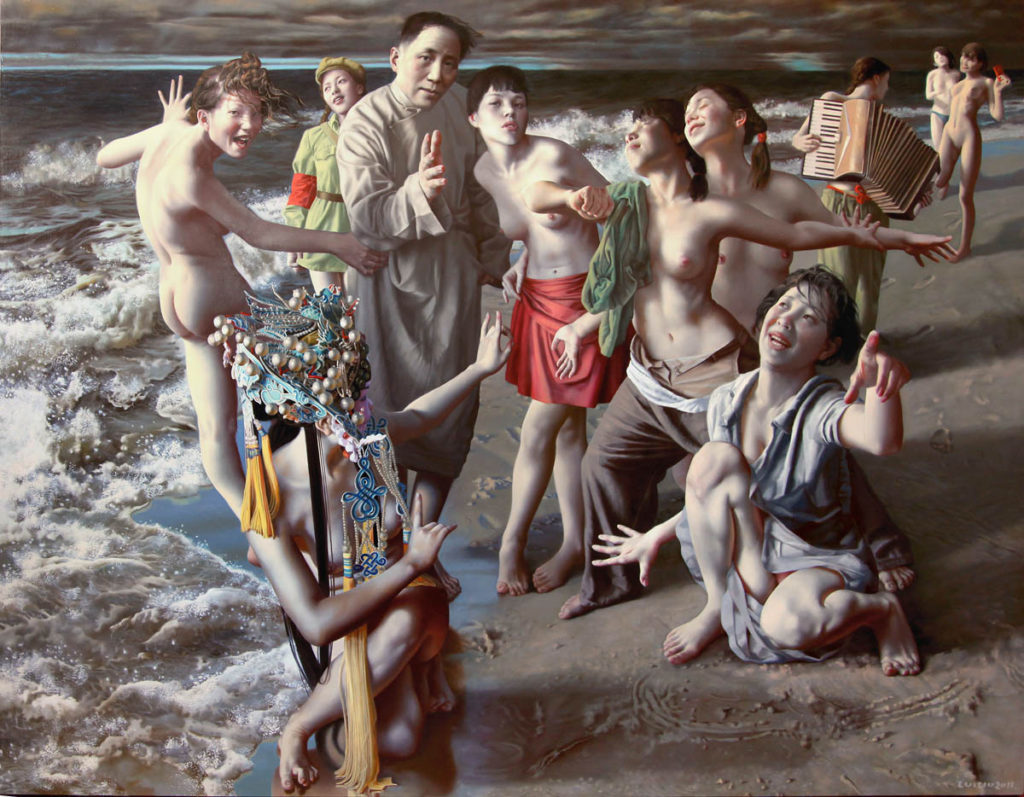Lui Liu
Lui Liu possesses superb painterly techniques, his unique language that finds a wide range of audience around the world. His acquisition of techniques started during China’s Cultural Revolution when he was a young boy painting posters on the streets and continued in the most prestigious Central Academy of Fine Arts in Beijing. Through his paintings, Lui Liu creates a surreal world that transcends cultures and spaces. Growing up in China and living in the west give him a dual role of being an insider and outsider of both worlds and afford him to “stand alone facing east and west, as he chooses,” wrote Barry Callaghan, a renown Canadian writer.
Lui Liu was born in March 1957 in North China and came to Canada in 1991. Speaking both Chinese and English fluently, Lui Liu possesses superb painterly techniques, his unique language that finds a wide range of audience around the world. His acquisition of techniques started during China’s Cultural Revolution when he was a young boy painting posters on the streets and continued in the most prestigious Central Academy of Fine Arts in Beijing.
Through his paintings, Lui Liu creates a surreal world that transcends cultures and spaces. Growing up in China and living in the west give him a dual role of being an insider and outsider of both worlds and afford him to “stand alone facing east and west, as he chooses,” wrote Barry Callaghan, a renown Canadian writer.
Lui Liu is a member of Ontario Society of Artists. He lives and works in Toronto, Canada with his wife and daughter while exhibiting at galleries throughout North America, Europe and Asia. He also held solo shows at Taiwan Fine Arts Museum and at Contemporary Art Center of Holland. Lui Liu has been interviewed by various publications. He was also featured at Bravo! Art Network and AP’s television programs. Lui Liu’s works have been purchased and commissioned by diverse private and corporate collectors in North America and around the world.
“These are not the best times for artists and their works.
The old masters of oil paintings have developed their techniques to perfection; and the masters of modern art have extended their styles to an extreme. Wittgenstein remarked about language: “If only you do not try to utter what is unutterable then nothing gets lost. And the unutterable will be contained in what has been uttered.” I believe, when it comes to the fields of fine arts — what is utterable has mostly been uttered.
In my opinion, the borderlines dividing language, science, common sense and the arts are disappearing gradually. I see convergence bringing about an integrated cultural world, and my works are an attempt to present such a vision of the integrating world to our senses. For me, this is the utterable element still unuttered.
Modernity appears to me like a tin bucket in which every possible style has been poured and mixed and used and abused in search of self-expression. A child can express himself with crayons and doddles. But great art could not be pure self-expression; it’s unfortunately the opposite. When an art piece is placed in a position of great art, it’s the unselfish erasing of the painter that lets it live, as T.S.Eliot has said, “the process of creation is the process of constantly removing one’s character and individuality from the work.”
What’s left of ME in my paintings then is the combination of other people’s rules and technique and my psychological perception of reality. I don’t try to be ancient or modern. I could only paint within the continuity of a tradition and with a simple mission: to paint the ever-lasting mythopoetic images of our time as they come out of the past and move into the future.
Nothing could be this carefree when I gained the stage to dance with the chains.”
-Lui Liu
Read the full article on Art Market Magazine Issue #18







